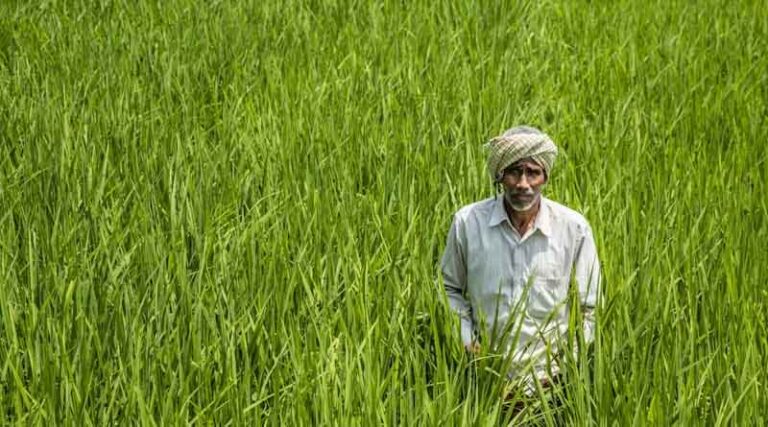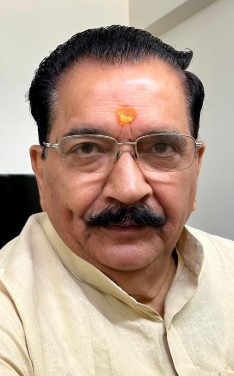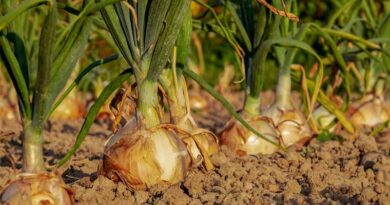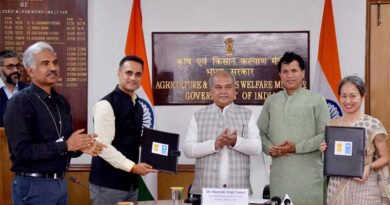
US-India Trade Deal Stuck on Agriculture and Dairy Products
By Krishan Bir Chaudhary, President, Bharatiya Krishak Samaj
03 July 2025, New Delhi: It is well known that agriculture is the backbone of India’s economy, and millions of Indian farmers depend on it for their livelihood. India grows almost all crops of economic significance and ranks among the top two producers globally in many of them.

So far, only cotton has been approved for commercial cultivation by the Genetic Engineering Appraisal Committee (GEAC) in India, and that too after several years of trials — primarily because it is a non-edible crop. No other genetically modified (GM) crop has been approved, despite tremendous pressure from developed countries eager to access India’s large market as a potential dumping ground for their products. Fortunately, the Food Safety and Standards Authority of India (FSSAI), the statutory body responsible for ensuring food safety and hygiene, has consistently safeguarded the availability of safe food for human consumption.
The agricultural products at the center of the trade dispute — primarily soybeans, maize, apples, and dry fruits — are all edible and directly meant for human consumption. Since these GM crops are not approved by the Government of India, there is no justification for importing them from the USA or any other country.
The situation is even more serious in the dairy sector. Reports suggest that dairy animals in the US are often fed non-vegetarian diets. Any dairy product originating from such animals is culturally and ethically unacceptable to Indian consumers, for reasons that are widely understood.
The underlying objective of this trade push seems to be to compel India to lower its import duties on these products to match US tariffs on a reciprocal basis — which would be significantly lower than India’s current rates. This would severely affect Indian farmers by reducing their income, shrinking their profits, and potentially leading to widespread losses across the farming community.
To understand this fully, we must revisit a critical moment in history — the inclusion of agriculture in the General Agreement on Tariffs and Trade (GATT) in 1988, without any formal approval from the Indian Parliament. This was a strategic blunder with far-reaching consequences that continue to haunt us today. Moreover, the base year for calculating subsidies was fixed at 1986–87, a decision that still impacts India’s flexibility in offering support to its farmers.
It would be unfair to compare Indian farmers with their counterparts in the US or other developed nations. Over 55% of India’s population is directly or indirectly involved in agriculture, whereas in the US, this figure is just around 1%. The average landholding in the US is at least 180 hectares, compared to less than 1 hectare in India. Similarly, the average subsidy per farmer in the US stands at a staggering USD 61,286, while the Indian farmer receives the equivalent of just USD 282.
Interestingly, the US has strategically increased its farm subsidies by shifting products from the Amber Box (export-oriented), and Blue Box (domestic support) to the Green Box (Research & Development), thereby avoiding WTO scrutiny while maintaining high support levels for its farmers.
India also faces genuine agronomic and environmental risks from GM imports, such as the threat of cross-pollination, which could endanger the country’s rich biodiversity and wipe out indigenous seed varieties.
Even today, Indian farmers are pleading for a fairer Minimum Support Price (MSP). This issue harks back to the WTO Bali Ministerial, where then-Minister Mr. Anand Sharma agreed to the “Peace Clause” on subsidies, increasing India’s compliance burden. An open-door import policy, as once proposed under President Trump’s vision, would not only destabilize our agriculture sector financially but also threaten our national food security and self-reliance — which India has achieved through hard work and careful planning. Today, India stands as the second-largest agricultural producer globally, maintaining large buffer stocks and ensuring the availability of affordable, high-quality food for its growing population.
Prime Minister Narendra Modi has emphasized India’s commitment to a level playing field across all sectors — agriculture, defense, pharmaceuticals, and infrastructure. India is on a clear growth trajectory, and any trade negotiations must reflect the aspirations and realities of its vast farming community.
Also Read: Syngenta to Become Global Leader in Biologicals; Expanding Nature Inspired Solutions for Farmers
📢 If You’re in Agriculture, Make Sure the Right People Hear Your Story.
From product launches to strategic announcements, Global Agriculture offers unmatched visibility across international agri-business markets. Connect with us at pr@global-agriculture.com to explore editorial and advertising opportunities that reach the right audience, worldwide.






